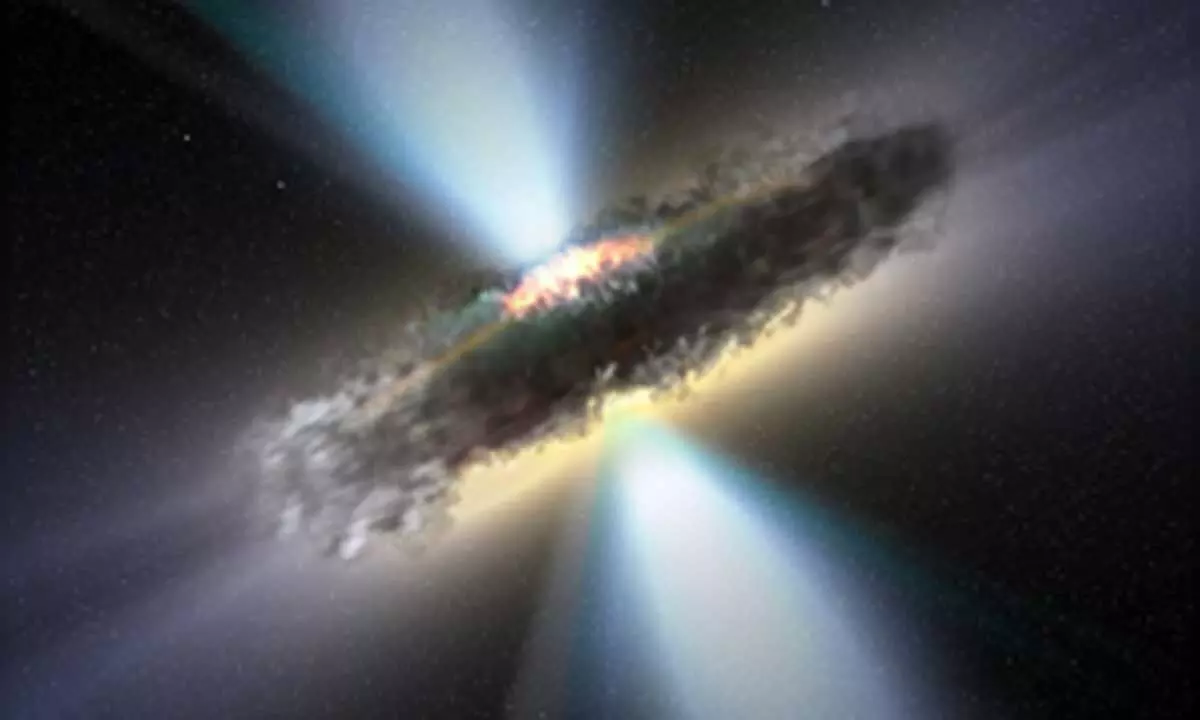Quasars can be buried in their host galaxies, find scientists
Share :

Supermassive black holes at the centre of galaxies, known as quasars, can sometimes be obscured by dense clouds of gas and dust in their host galaxies, a new study has revealed.
London: Supermassive black holes at the centre of galaxies, known as quasars, can sometimes be obscured by dense clouds of gas and dust in their host galaxies, a new study has revealed.
This challenges the prevailing idea that quasars are only obscured by donut-shaped rings of dust in the close vicinity of the black hole, according to the study published in the journal MNRAS.
The findings provide new insights into the link between galaxy growth and black hole activity.
“It's like the quasar is buried in its host galaxy. In some cases, the surrounding galaxy is so stuffed with gas and dust, not even X-rays can escape,” said Carolina Andonie, a student at the Centre for Extragalactic Astronomy at Durham University in the UK.
"We always thought the dusty donut around the black hole was the only thing hiding the quasar from view. Now we realise the entire galaxy can join in,” Andonie added.
Quasars are extremely bright objects powered by black holes gorging on surrounding material. Their powerful radiation can be blocked if thick clouds come between us and the quasar.
The team of scientists led by Durham University found evidence that in some quasars, the obscuration is entirely caused by the host galaxy in which the quasar resides.
Using the Atacama Large Millimeter Array (ALMA) in Chile, they observed a sample of very dusty quasars with intense rates of star formation.
They found that many of these quasars live in very compact galaxies, known as “starburst galaxies”, no more than 3000 light-years across.
These starburst galaxies can form more than 1,000 stars like the Sun per year.
To form such a large number of stars, the galaxy needs a huge amount of gas and dust, which are essentially the building blocks of stars.
In such galaxies, clouds of gas and dust stirred up by rapid star formation can pile up and completely hide the quasar.
The team estimates that in about 10-30 per cent of very rapidly star-forming quasars, the host galaxy is solely responsible for obscuring the quasar.













